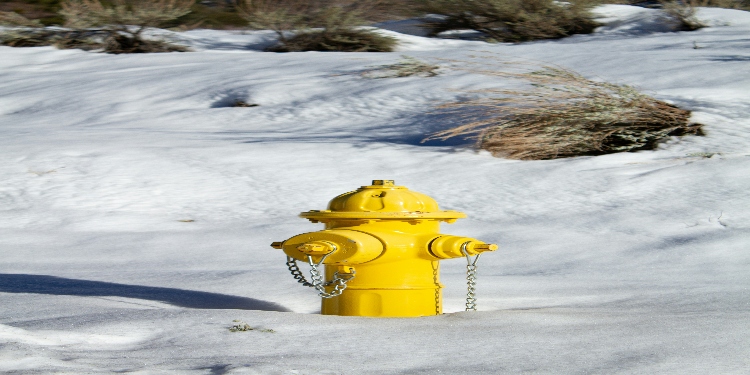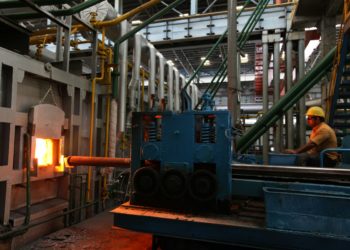In the context of fire safety in Alaska, reliable fire pump systems are not just a legal requirement; in fact, they become a strict necessity to safeguard lives, properties, and even business operations. Fire pumps play a very critical role, that is, ensuring proper water pressure for the fire suppression systems, particularly within larger industrial facilities, warehouses, or commercial buildings. And in Alaska’s unusual and harsh climate, where temperatures drop way below freezing, there are isolated areas that prevail, which means that routine fire pump maintenance becomes even more important than normal.
A fire pump system is really considered the heart of a building’s entire fire protection system. Since it guarantees sufficient water pressure to reach sprinklers and hydrants in case of emergencies. But just like any other mechanical device, fire pumps require regular maintenance to be operational. Most times, when maintenance is not done, the system may collapse during a fire, and that can result in loss that is catastrophic. So, let’s see why maintenance of fire pumps in Alaska is so important; what it entails, and how it ensures long-term dependability of the system.
Why Fire Pump Maintenance is Important in Alaska
Alaska’s extreme weather and remote geography complicate the use of fire protection systems compared to most states. Prolonged cold can freeze pipes, shatter seals, and render valves inoperable. Distant facilities, such as lodges, oil camps, or plants, in some cases do not receive routine inspections for months unless scheduled. When a fire crisis occurs, a failure of a pump could delay water flow long enough to bring enormous destruction.
Routine fire pump maintenance guarantees that every aspect of the system, from the controller and pump motor to valves and sensors, is functioning as it should. It also aids in NFPA compliance and local fire codes. Insurance companies commonly require records of proper maintenance; without them, penalties are incurred or claims are denied if there happens to be a fire incident.
Key Elements of Fire Pump Maintenance
A good maintenance program typically consists of inspections, testing, and preventive services combined. Here are the primary steps in maintaining fire pumps in Alaska:
Weekly inspections
Technicians visually inspect the pump room every week to ensure it is clean, dry, and warm above freezing temperature. They ensure that suction and discharge valves are in the open position, all gauges are in good working condition, and no leaks or unusual sounds are noted. In case the pump is diesel-powered, oil levels, fuel system, and battery condition are monitored as well. The churn test (no-flow test) ensures whether the pump starts in proper order and operates in an even fashion without pumping any water.
Regular monthly testing
Every month, the system must operate under real operating conditions. That involves operating the pump to ensure that it automatically returns to operation when pressure falls, and provides the specified pressure range. Controllers and alarms are also tested; in Alaska, temperature readings must also be done in pump rooms since the environment can change rapidly.
Annual maintenance and performance testing
Every year, fire pumps need to be tested at full flow. This serves to determine if the pump can still produce its rated pressure and flow. Routine maintenance may involve lubricating bearings, alignment checks, seal replacement, and diesel or electric engine verification. Most building owners perform this measure prior to the cold season so as not to cause inconvenience due to freezing weather.
Preventive repairs and replacements
With time, components like bearings, seals, or impellers will deteriorate. Preventive maintenance allows detection of problems early, before a significant failure exists. Replacement of worn-out parts in a timely fashion assists in prolonging system life and enhancing reliability.
Challenges Unique to Alaska
Maintenance of fire pumps in Alaska presents some challenges that must be taken into account by building owners and protection firms:
- Cold protection: Insulation or heating of pump rooms is necessary so that freezing doesn’t take place. Heat tracing is required sometimes on exposed pipes.
- Remote access: Due to distance from service providers, many facilities are located far away. Pre-scheduling and the availability of spare parts on-site becomes useful.
- Corrosion and moisture: Coastal or wet environments can lead to greater corrosion. Protective coatings and regular inspection decrease it.
- Power reliability: As the power outages occur more in remote locations, diesel-powered pumps need to be kept ready.
Advantages of Periodic Fire Pump Maintenance
Safety and dependability
Proper maintenance guarantees that your fire pump will be functioning effectively during emergencies. which provides assurance that lives and assets are safe.
Code and insurance compliance
Maintenance to standards maintains you up to code and avoids issues with insurance coverage.
Prolonged equipment life
Timely replacement of parts and regular checks prevent wear and tear from developing into costly breakdowns; and this prolongs the overall life of the pump system.
Lower repair costs
Planned maintenance is always more cost-effective than emergency repairs; particularly in Alaska, where travel charges for services to remote locations can become very costly.
Assurance of safety
With assurance that experts have tested and checked your system, peace of mind comes with the knowledge that occupants and buildings are safe.
Best Practices for Fire Pump Maintenance in Alaska
To keep your system operating at peak performance, consider the following:
• Plan maintenance in accordance with NFPA 25 guidelines
• Maintain written records of inspections and tests
• Keep the pump room above 40°F year-round
• Regularly test backup power systems
• Engage a qualified local fire protection firm familiar with Alaskan conditions
Conclusion
Alaska fire pump maintenance is not just about complying with safety codes; in fact, it’s about ensuring your system operates reliably within one of the world’s most challenging environments. From weekly visual inspections to annual full-flow testing, every step contributes to a more resilient fire response system. Because of Alaska’s cold temperatures and huge distances, dealing with trained, experienced professionals who know local conditions is of critical importance. By spending money on proper fire pump maintenance, you are spending money on the safety, long-term security, and protection of your building and all those within it.













































































